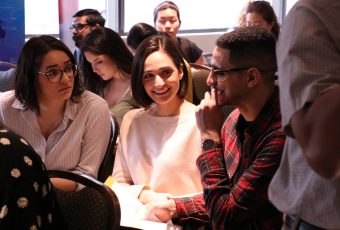University of Melbourne talks green urban planning
Australian councils are being urged to take up new guidelines in green urban planning to create cooler cites with greener landscapes to reduce the risk of heat stress.
Australia is experiencing a trend of hotter temperatures and as a result heat stress is now a serious health problem for Australians who live in urban areas.

Research published in the Landscape and Urban Planning journal, led by the University of Melbourne suggest interventions to cool our urban hot spots using features like green facades.
Guideline author Dr Nick Williams from Resource Management and Geography said, “Our research has developed a framework for better urban green infrastructure that can reduce urban air and surface temperatures.”
“During the day buildings and streets absorb solar radiation and release the heat at night keeping urban areas warmer than the surrounding countryside. But this can be tempered with a range of effective urban green designs. This includes greater use of trees, green roofs and facades, ” said Dr Williams.
Using thermal images Dr Williams and his collaborators at the University of Melbourne and Monash University studied the City of Port Phillip as a typical urban environment.
“The City of Geelong has adopted the framework and we are hoping other Australian councils and shires will follow suit as its now community health issue.”
The research identified ‘hot spots’ and addresses factors like street geometry, soil and water availability, maintenance issues and community behaviour.
University of Melbourne Master of Urban Planning
Program title: Master of Urban Planning
Location: Parkville, Melbourne, Victoria
Semester intake: March 2015
Program duration: 2 years
In the Master of Urban Planning, students will examine the interaction between people, the places they live and the policies that help shape economically viable, socially just, environmentally sustainable, safe and healthy communities. Students will explore
- the frameworks and operations of different planning systems and debates;
- different perspectives on urban problems, policies, planning and practices;
- planning in relation to critical issues such as housing, energy, health, strategy, transport, economy and disaster recovery; and
- the way in which planning decisions impact on real world situations.
The program allows students to develop expertise in an area of specialisation in preparation for a focused career. As well as core courses, electives and a research thesis, they will complete four courses in one of the following areas:
- International development planning
- Urban development and planning
- Social and community planning
- Environmental planning
Career Outcomes
Many Master of Urban Planning graduates enter the public sector and work in government departments and agencies, or for local councils and regions.
The private sector and civil society, within Australia and internationally, offers an increasing range of employment opportunities, including urban planning and design, environmental and transport planning consultancies, property development companies, and housing and community advocacy. There are also opportunities in tertiary education and research.
Urban planners work with teams of related professionals such as architects, landscape architects, engineers, environmental scientists, economists, property valuers, real estate developers, lawyers and sociologists.
*

































Ask A Question
Ask us about your program of interest, or if you have a question about our services.
CONTACT US TODAY